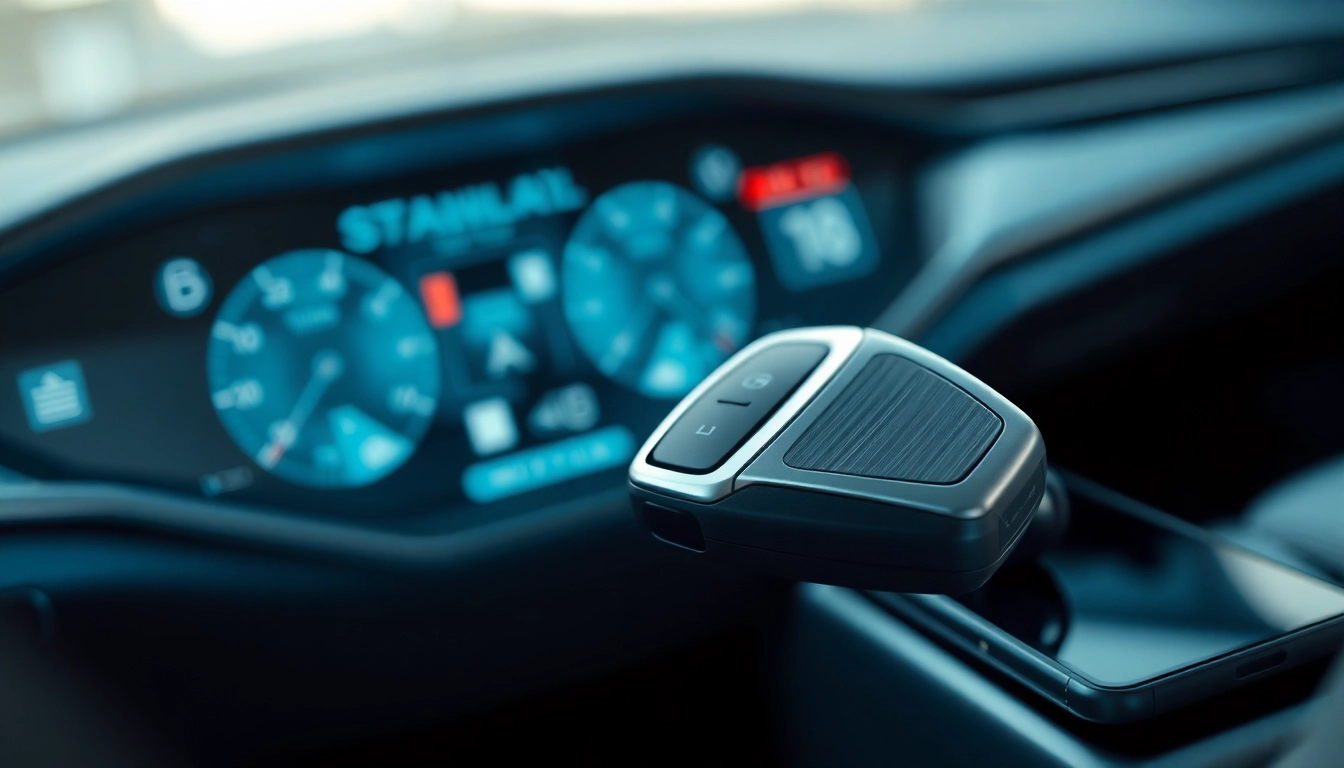What is Part Exchange?
Definition and Overview
Part exchange is a term commonly used in various industries, most notably in automotive sales and real estate. Essentially, it refers to a transaction where a buyer provides their old item—typically a vehicle or property—as a form of payment toward the purchase of a new or upgraded one. This method simplifies the buying process, making it particularly attractive for those looking to upgrade without the hassle of separate sales. For example, when you wish to part exchange your vehicle, the dealership evaluates your old car and offers a discount on your new vehicle based on its value.
How It Works
The part exchange process can be broken down into several key steps. Initially, the seller approaches a dealership with their old vehicle or property. The dealer performs an assessment of the item’s condition, age, and market value. Following this evaluation, the dealer provides an offer that can reduce the price of the new purchase. If the offer is accepted, the old item is handed over, and the new one is delivered, streamlining the payment process. This transaction negates the need for private sales, which can be time-consuming and sometimes less profitable.
Benefits of Part Exchange
Opting for part exchange comes with several advantages:
- Convenience: Part exchanging saves time as it eliminates the need for private selling, which can be complex and lengthy.
- Immediate Value: By getting an immediate estimate from the dealer, customers can offset costs right away without waiting for a buyer to emerge.
- Lower Transaction Hassles: Part exchange minimizes paperwork and negotiation hassles that are often associated with individual sales.
- Potential for Better Deals: Deals can often be negotiated, especially if the vehicle in question is in excellent condition or if it is a sought-after model.
Evaluating Your Car for Part Exchange
Factors Affecting Value
When contemplating a part exchange, understanding the factors that affect your car’s value is crucial:
- Condition: The overall condition of the car, including its mechanical and cosmetic aspects, significantly influences its value.
- Mileage: Higher mileage generally diminishes a vehicle’s worth, with lower mileage usually fetching a better offer.
- Age: Newer models tend to be valued higher, but depreciation impacts the value sharply in the first few years.
- Market Demand: The popularity of a specific make and model can drive up its value; models that are in demand can yield higher offers.
Preparing Your Vehicle
Preparing your car for part exchange can significantly increase the offer you receive. Here are some practical steps:
- Clean the Vehicle: A thorough cleaning, inside and out, gives a better first impression. Consider detailing to enhance appeal.
- Maintenance Records: Presenting your maintenance history can assure dealers of the vehicle’s condition and may positively impact their offer.
- Repair Minor Issues: Fixing small defects, such as scratches or warning lights, can greatly improve the perceived value.
- Gather Documentation: Having all relevant paperwork, including titles, service records, and any modifications, ready can facilitate a smoother transaction.
Getting a Fair Deal
To secure a fair deal during a part exchange:
- Research Market Values: Use online valuation tools to estimate your car’s worth based on its make, model, year, and condition.
- Get Multiple Offers: Seeking quotes from different dealerships can provide leverage in negotiations, potentially increasing your final offer.
- Negotiate: Don’t hesitate to discuss the offer with the dealer; presenting research or alternative offers can influence their final bid.
- Be Realistic: Understand that while you want the best deal, there may be a gap between what you hope to receive and market reality.
Part Exchange Process: Step by Step
Initial Assessment
The part exchange process begins with an assessment of the vehicle. This step is pivotal as it sets the stage for negotiations. Typically, the dealer will inspect the following areas:
- Exterior Condition: Look for visible damages, paint conditions, and general aesthetic appeal.
- Interior Condition: Inspect for cleanliness, wear and tear, and the functionality of in-car technology.
- Mechanical Factors: Review the engine performance, transmission, brakes, etc., to ensure no significant repairs are needed.
Negotiation Tips
Negotiation is crucial in getting the most out of your part exchange. Here are some tips to help you:
- Stay Informed: Armed with market research, you can argue your case more effectively.
- Maintain Composure: Keep discussions professional and express eagerness rather than desperation.
- Be Willing to Walk Away: Showing that you are not reliant on the deal may encourage the dealer to offer you a better deal.
- Offer Compromises: Indicating flexibility can help bridge negotiation gaps, such as accepting lower offers if extras are included.
Finalizing the Deal
Once both parties reach an agreement, finalizing the deal typically involves completing necessary paperwork. This can include:
- Signing Over Title: Ensure that the title is appropriately signed and that ownership is officially transferred.
- Final Payment Arrangement: Discuss how the agreed-upon value will be applied toward the new vehicle’s purchase price.
- Understand Terms and Conditions: Make sure to clarify any warranties or return policies associated with the new purchase.
- Receive Transaction Records: Keep a copy of all documents related to the part exchange for future reference.
Common Misconceptions About Part Exchange
Trading In vs. Selling Privately
A common misconception is that trading in a car will always yield less money than selling it privately. While this is often true, various factors can affect each route:
- Time and Interest: Selling privately requires time to find a buyer, and involved efforts can be considerable. Part exchange, while potentially offering a lower price, saves significant time.
- Market Fluctuations: Values can fluctuate wildly; part exchanging during a peak period could yield higher values than a private sale during a slump.
- Convenience Factor: For many, the ease of a quick sale at a dealership outweighs the potential loss in monetary value.
Dealer Advantages
Dealers have several advantages during negotiations, including:
- Market Expertise: Dealers are knowledgeable about market value and can price items accordingly.
- Overhead Costs: Their business model allows them to factor in selling costs, thus being more flexible in offers.
- Trade-In Incentives: Many dealers offer favorable terms for trade-ins, especially during promotions to boost inventory.
Hidden Costs to Watch Out For
While part exchanging simplifies many aspects, there may be hidden costs involved that buyers should be aware of:
- Down Payments: Lower offers may come with higher down payments required for the new vehicle.
- Trade-In Premiums: Some dealerships inflate the price of the new vehicle as part of negotiating the trade-in value.
- Financing Charges: If financing the new purchase, interest rates may vary significantly, affecting overall costs.
Maximizing Your Part Exchange Experience
Researching Dealerships
Not all dealerships function the same way. Researching and choosing the right one can directly affect your experience:
- Reputation: Look for dealerships with good customer reviews and transparency in their dealings.
- Expertise: Focus on those specializing in the make of your vehicle, as they may offer better valuations due to their understanding of the vehicle.
- Current Offers: Keep an eye on any promotions specifically for trade-ins; they may result in better deals.
Understanding Market Trends
Being aware of current trends can profoundly impact your part exchange outcomes. Trends to monitor include:
- Seasonality: Certain times of the year may yield better prices; for instance, end-of-year sales can be beneficial due to inventory turnover.
- Consumer Preferences: The shift towards electric or hybrid vehicles may influence dealership offers for traditional cars.
- Economic Factors: Broader economic conditions including unemployment rates and fuel prices can affect car values significantly.
Preparing for Future Transactions
To improve your future part exchange experiences, consider the following:
- Maintain Your Vehicle: Regular maintenance and cleanliness can enhance your vehicle’s resale value significantly.
- Stay Informed: Keeping abreast of automotive trends and dealer practices can provide leverage during negotiations.
- Document Everything: Keeping detailed records of repairs and transactions can help assess value and streamline the next exchange.



